13.1 It’s a small world after all
Real-world social networks tend to be “small worlds”.
In a small world architecture nodes belong to well defined clusters that are connected to one another.
Pairs exhibit few long paths and many short paths facilitated by hubs.
Highly clustered though proximal on average.
“Six degrees of separation” https://www.sixdegreesofwikipedia.com/
An extreme network structure is “caveman structure” of very tight and small clusters loosely connected to one another.
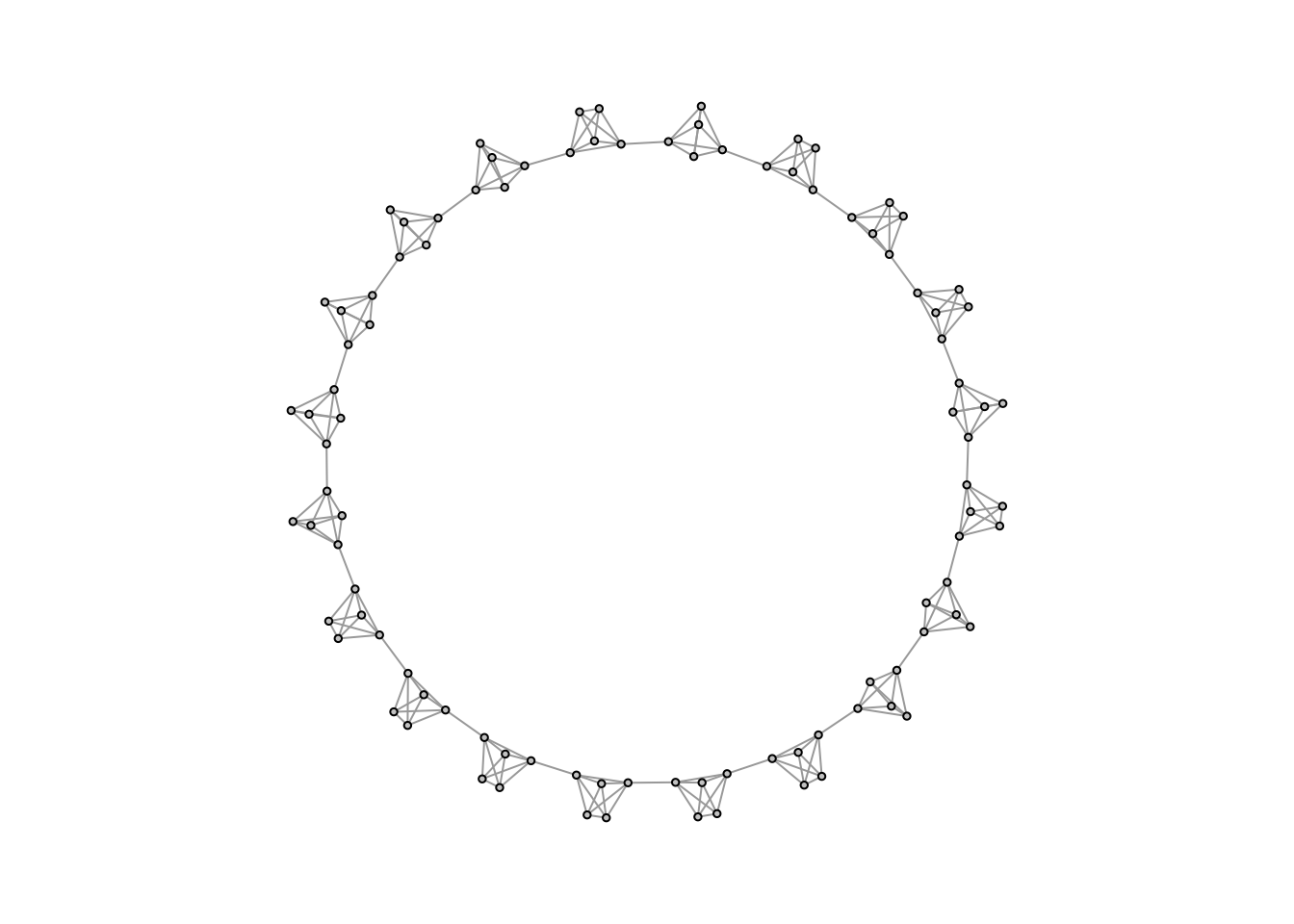
A cave man structure of 100 people and 20 communites
Low density (connected edges out of all possible edges)
High transitivity (clustering tendency)
High path length AKA degrees of separation (>10) (average number of edges connecting two random nodes)
Large diameter (shortest path between two furthest nodes/ number of edges separate any two nodes on average).
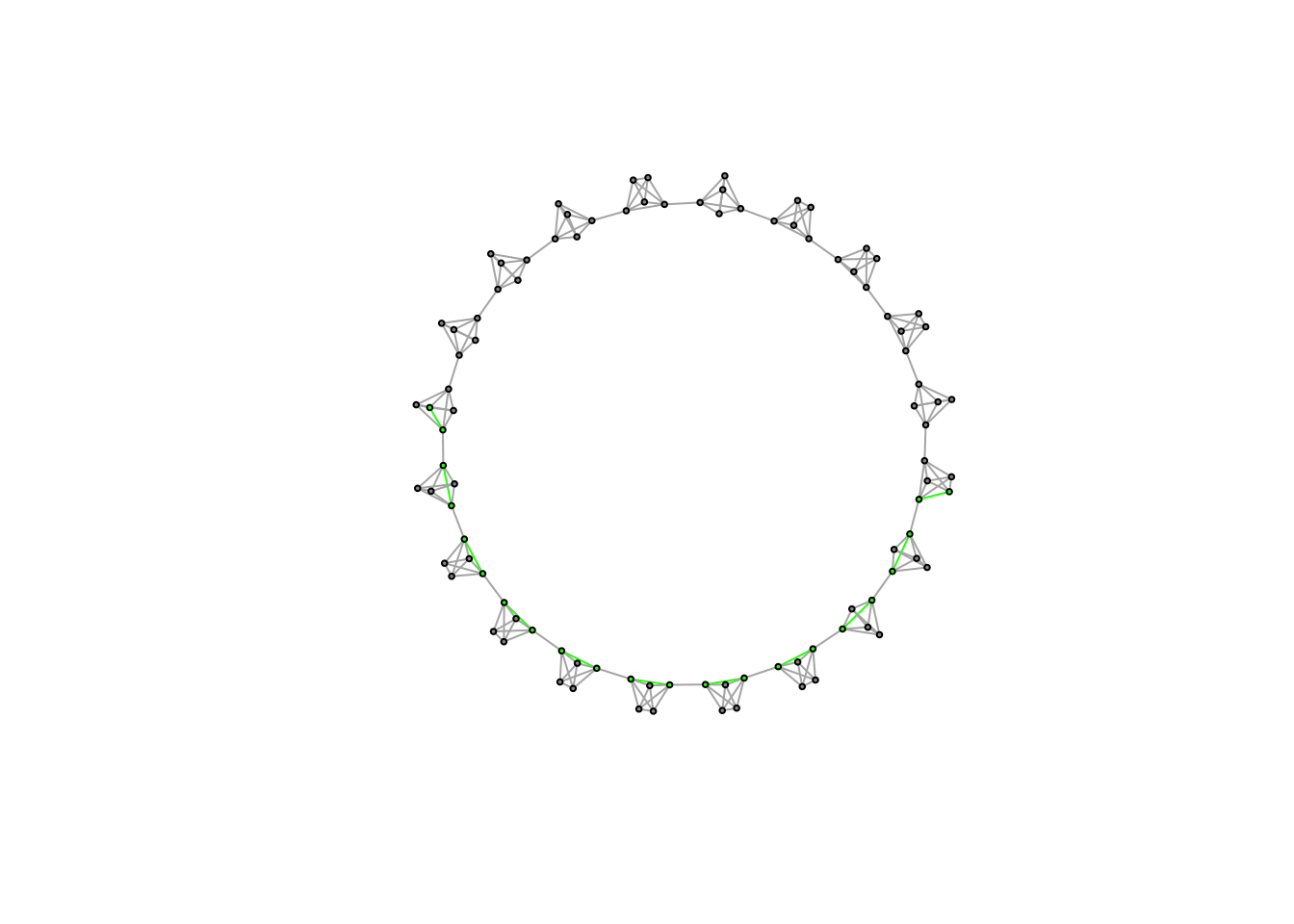
How can one decrease the average path length of the caveman network? In other words, how to obtain a “small world” starting from a “cave man”? Bring it closer to a “random network”!
Randomly rewiring the network while maintaining the average node degree results is edges that cut through the network!
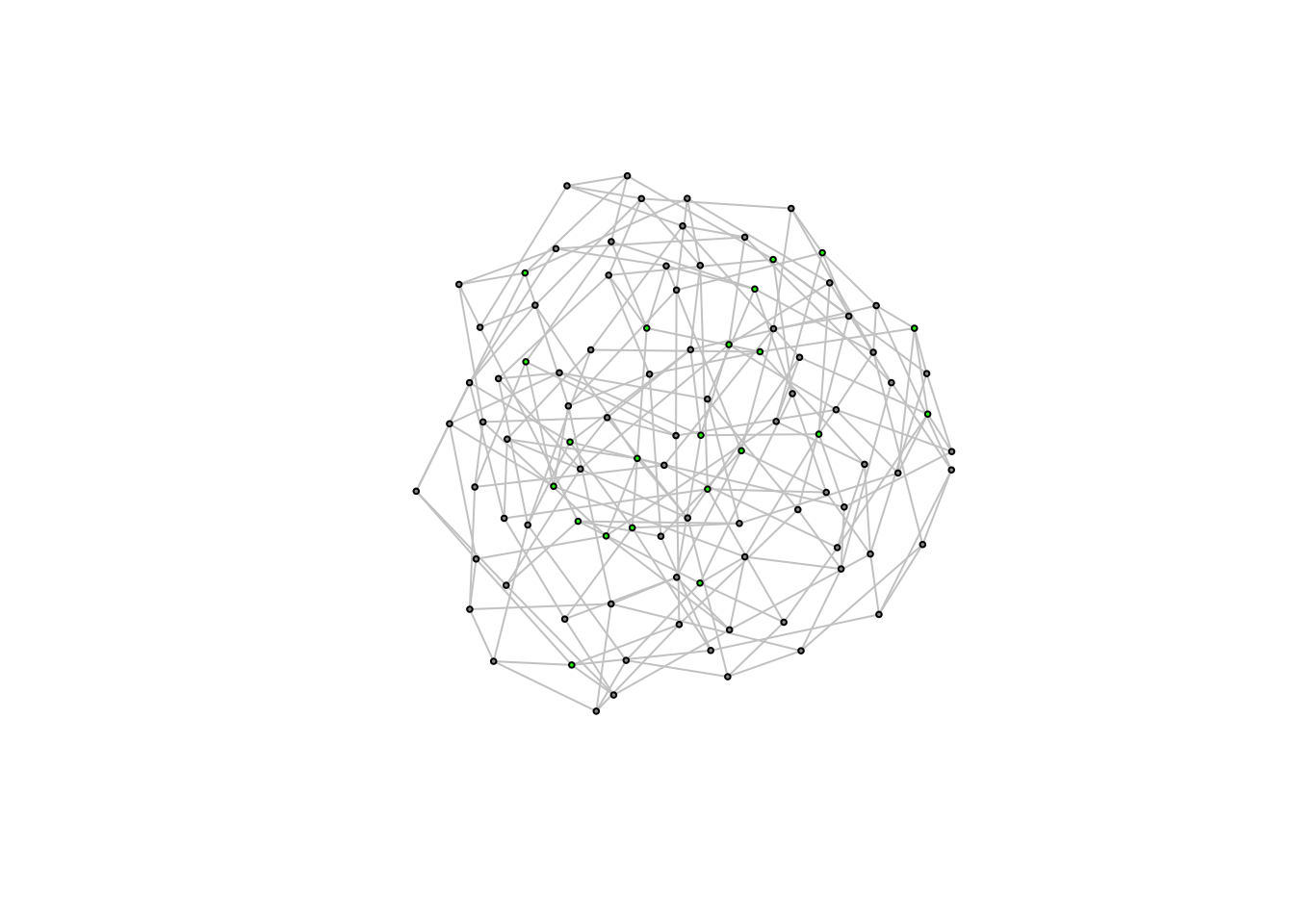
The more random rewiring the more similar it gets to a random network.
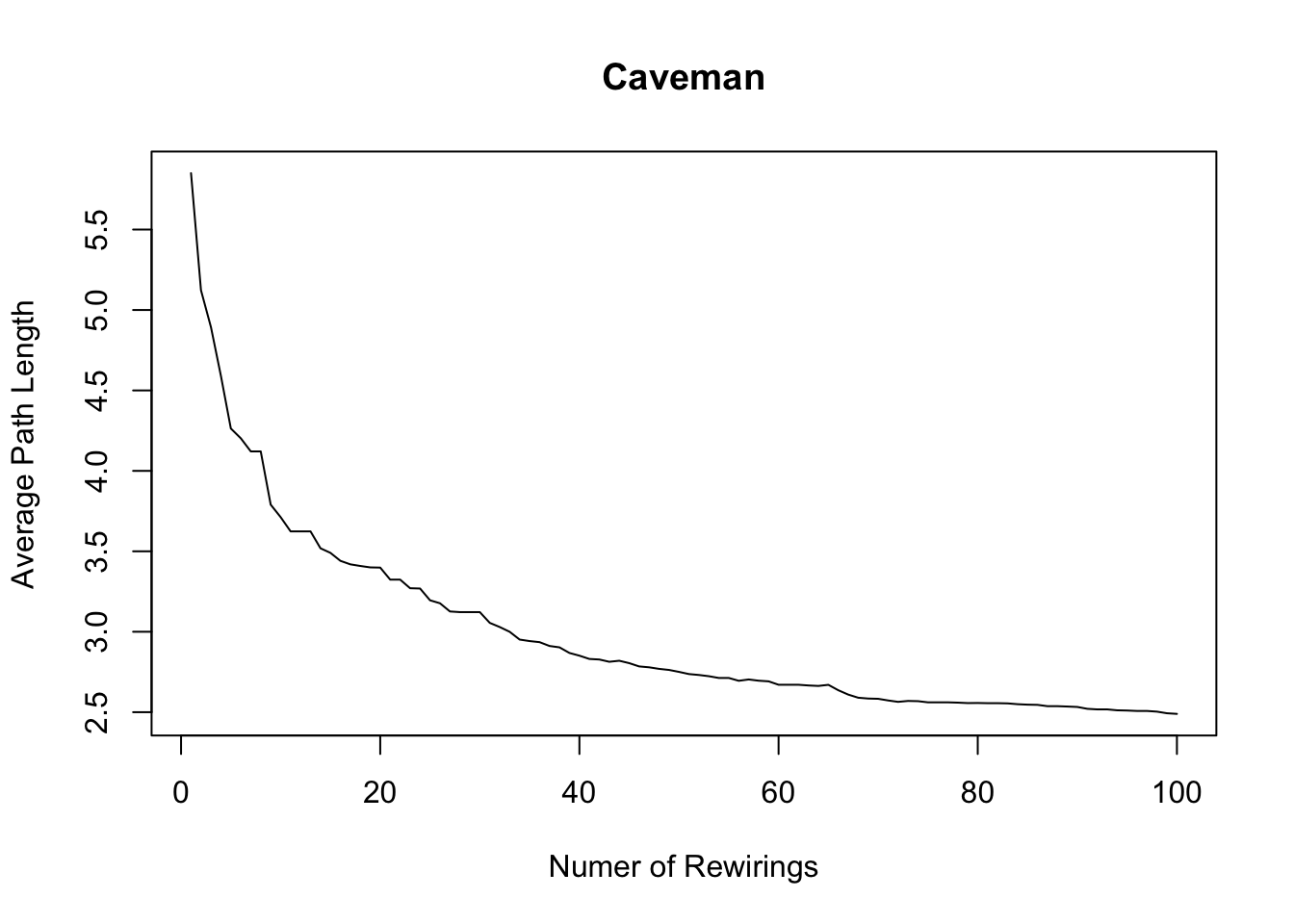
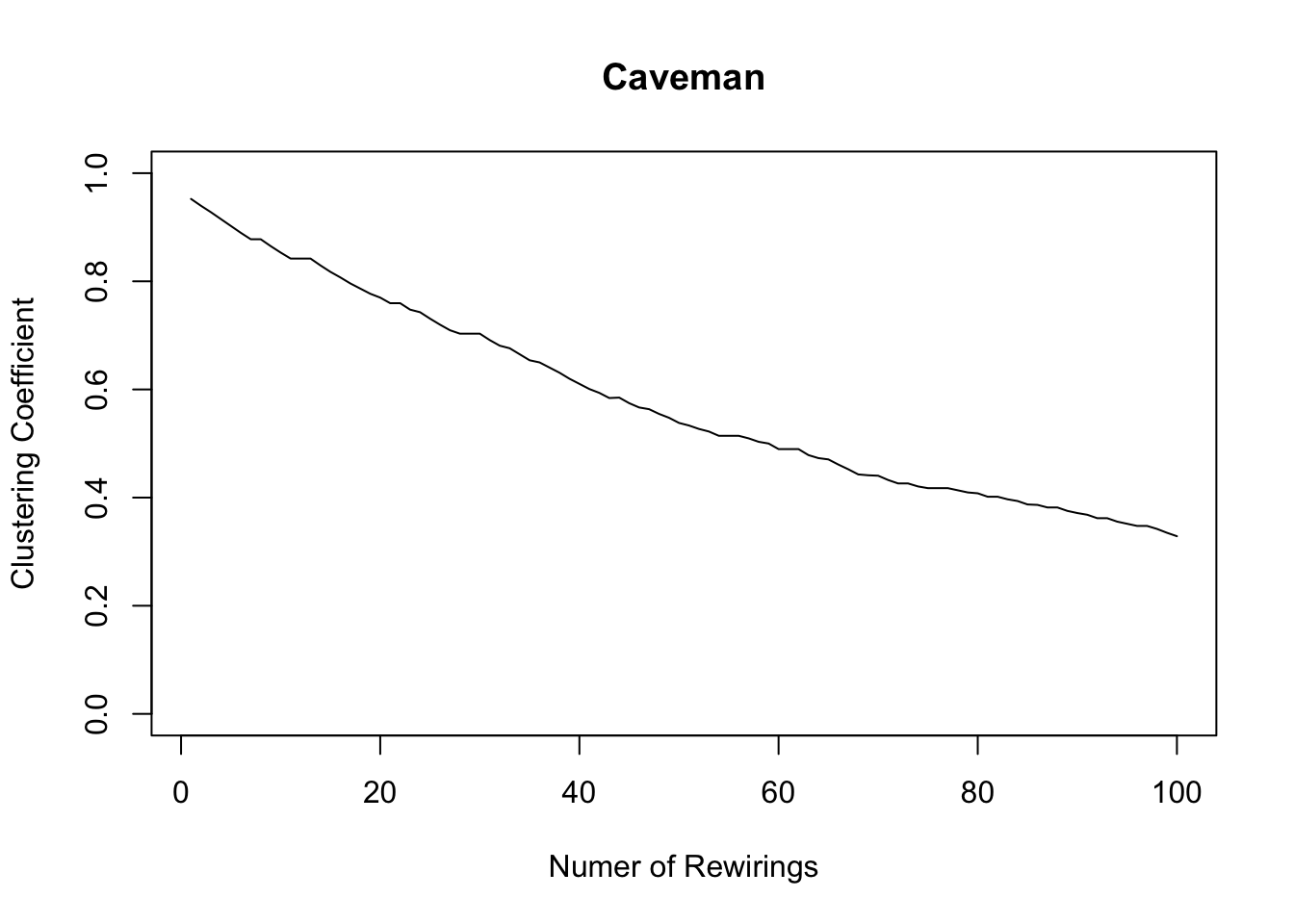
How does small world networks compare to other structures?

Neal, Z. (2018).


Watts, D., Strogatz, S. Nature (1998)